I really wanted to make more use of the vinyl cutter, but I only had time to make a sticker of the research lab I work in at Tufts. I ran into substantial difficulty weeding the pattern on the transfer paper as it was so narrow. In the future, it may be preferable to weed on the device itself as the transfer paper made the pattern more messy and seemed to be a complicating step.
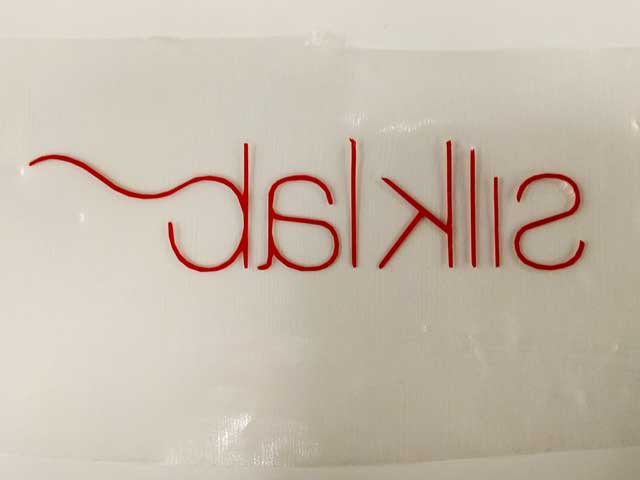 a) Pattern on transfer paper.
a) Pattern on transfer paper.
 b) Pattern on back of my laptop.
b) Pattern on back of my laptop.
Most of the week was spent on laser cutting. While I've used the laser cutter prior to this class a decent amount, I had mostly kept to the simplest box designs. In class I was particularly interested in the flexture joints and the bending enabled by kerfing.
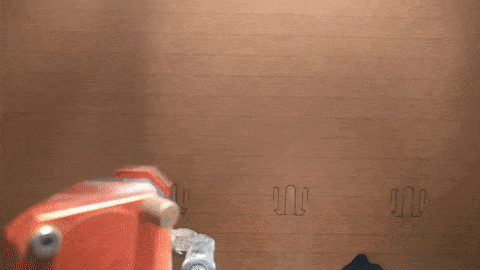
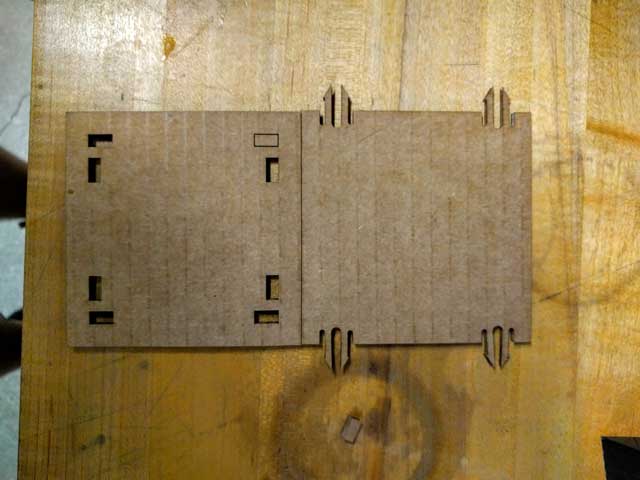 a) This is the test plate that I used to verify that my joints worked.
a) This is the test plate that I used to verify that my joints worked.
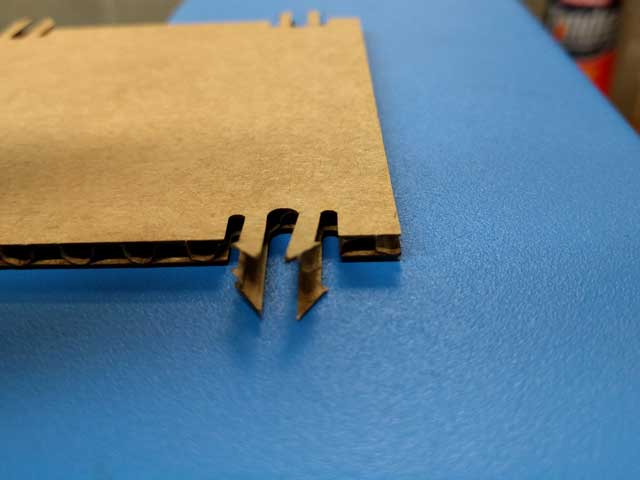 b) The first test joints were parallel to the long axis corrugation and suffered from substantial separation.
b) The first test joints were parallel to the long axis corrugation and suffered from substantial separation.
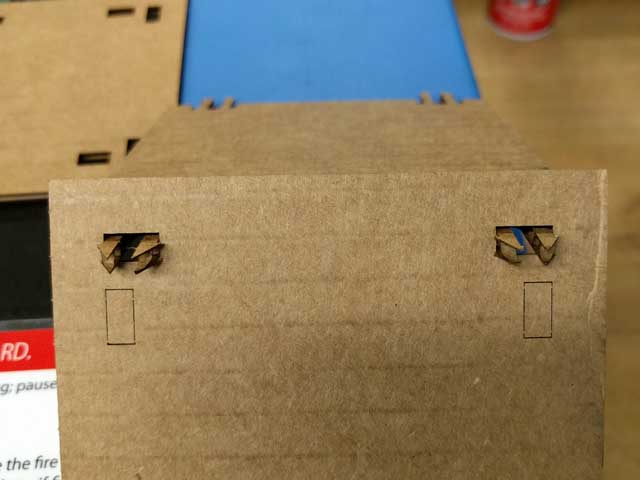 c) The separation problem resulted in a loose joint.
c) The separation problem resulted in a loose joint.
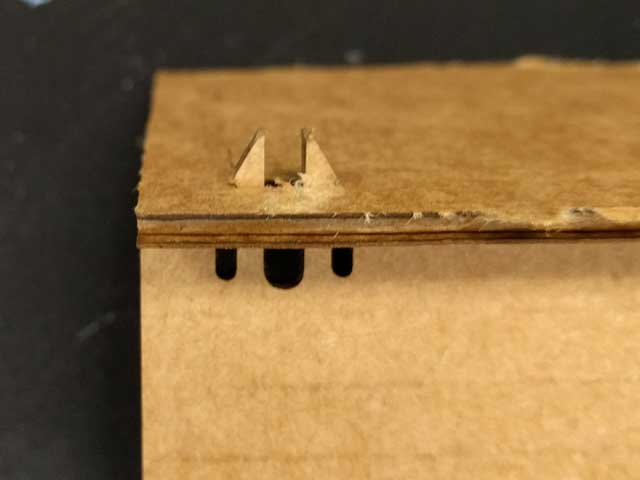 d) After adjusting parameters and rotating the pattern perpendicular to the corrugation, the joint was stable.
d) After adjusting parameters and rotating the pattern perpendicular to the corrugation, the joint was stable.
I fiddled with the kerf settings and eventually concluded that kerf bends parallel to the long axis of the corrugation work well for flexible joints whereas kerf bends perpendicular work well for fixed joints. In a future itertation of the suitcase, I want to try a kerf bend for a possible hinge.
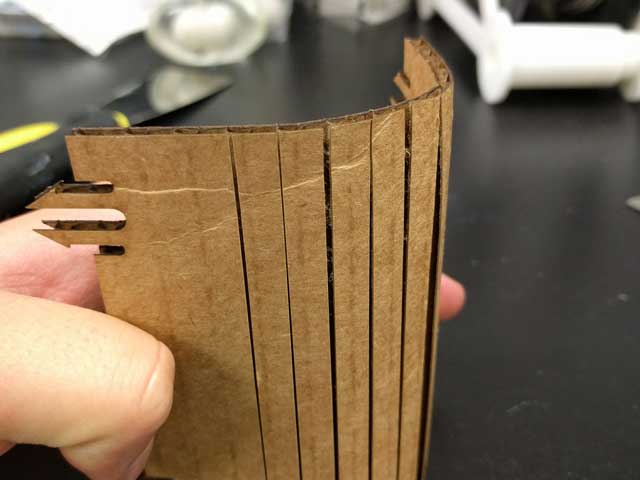
One perennial problem that I seem to have is whenever I travel, I rarely have the right suitcase for travel in both directions. When I'm bringing gifts or demos, my suitcase is inevitably empty on the return. On the other hand when I get souvenirs I never have room in my suitcase. Thus I wanted a cheap and disposable travel container that could still be used in the same way as a rolling suitcase.
I used Fusion 360 to create a mostly parametric design that allowed for easy modification of the cardboard thickness and the overhangs in the form. Furthermore, the parametic model also allowed easy adjustment of the kerfing.
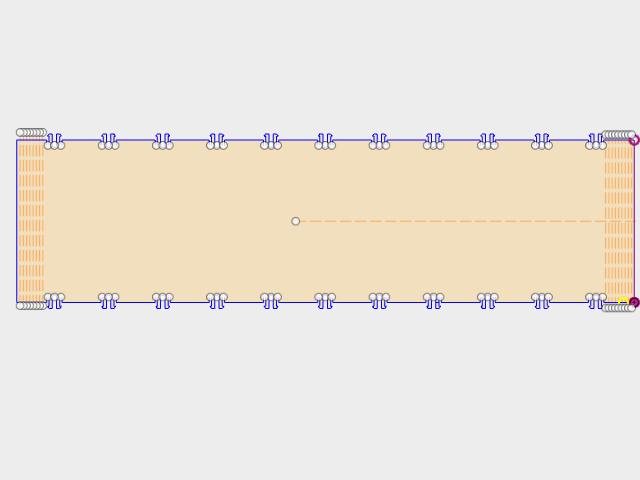 a) Example of a Fusion 360 sketch which was laser cut.
a) Example of a Fusion 360 sketch which was laser cut.
While I was making the suitcase, I decided not to make a handle because I wasn't sure if I was going to be able to make it telescope. If I had more time, I definitely would have tried to have a handle integrated.
I also found that when I broke up the side pieces to fit it into the laser cutter, I weakened the structure substantially. If I had access to a larger laser cutter I would definitely cut all the sides out of a single piece.
Finally, I would make the top piece of the suitcase so it can be opened using a flexture hinge and a bigger latch allowing for accessing suitcase contents on the go.
 a) The suitcase looking from the top down. Note the zip tie and holes for attaching a string handle.
It does not sit flat so in a future design I'd add feet to level it.
a) The suitcase looking from the top down. Note the zip tie and holes for attaching a string handle.
It does not sit flat so in a future design I'd add feet to level it.
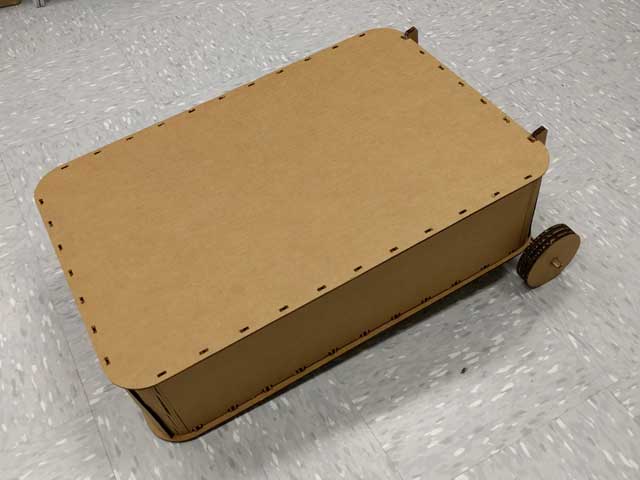 b) The suitcase laying down.
b) The suitcase laying down.
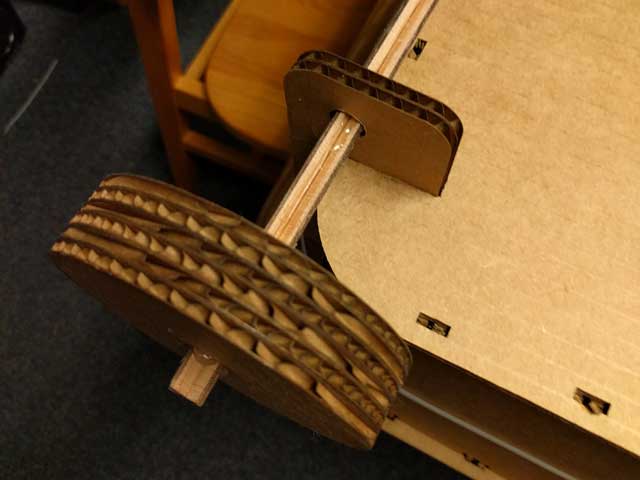 c) The wheels are connected by an X axle made out of laser cut plywood that is waxed for decreased friction.
In order to keep the axle together, hot glue was used. Note the alternation in the wheel pattern to increase wheel durability.
c) The wheels are connected by an X axle made out of laser cut plywood that is waxed for decreased friction.
In order to keep the axle together, hot glue was used. Note the alternation in the wheel pattern to increase wheel durability.
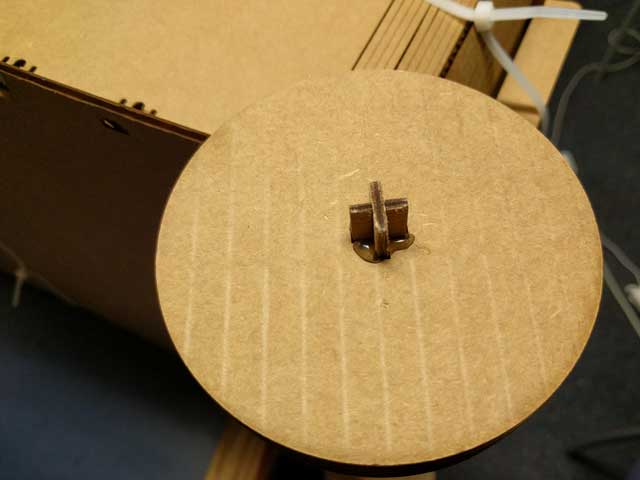 d) The attachment of the cardboard wheel to the axle.
d) The attachment of the cardboard wheel to the axle.
 e) It rolls!
e) It rolls!